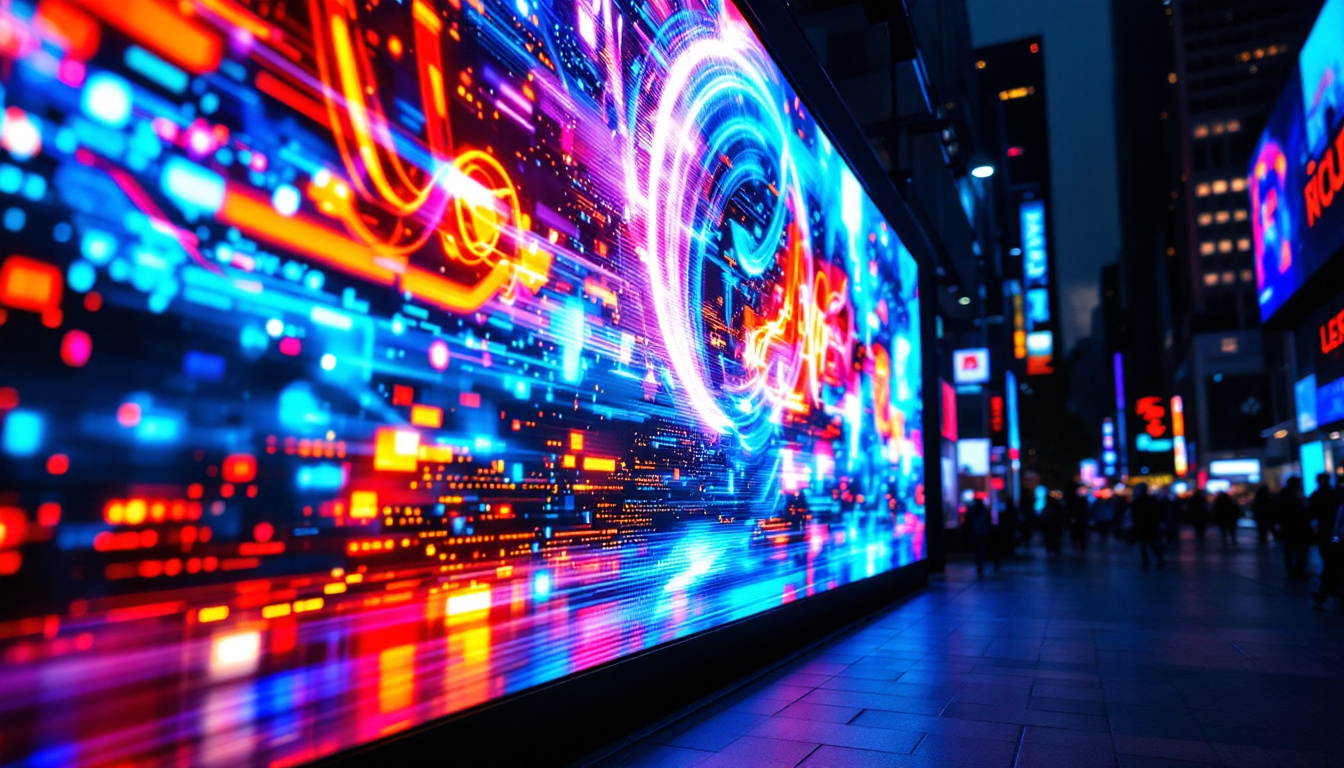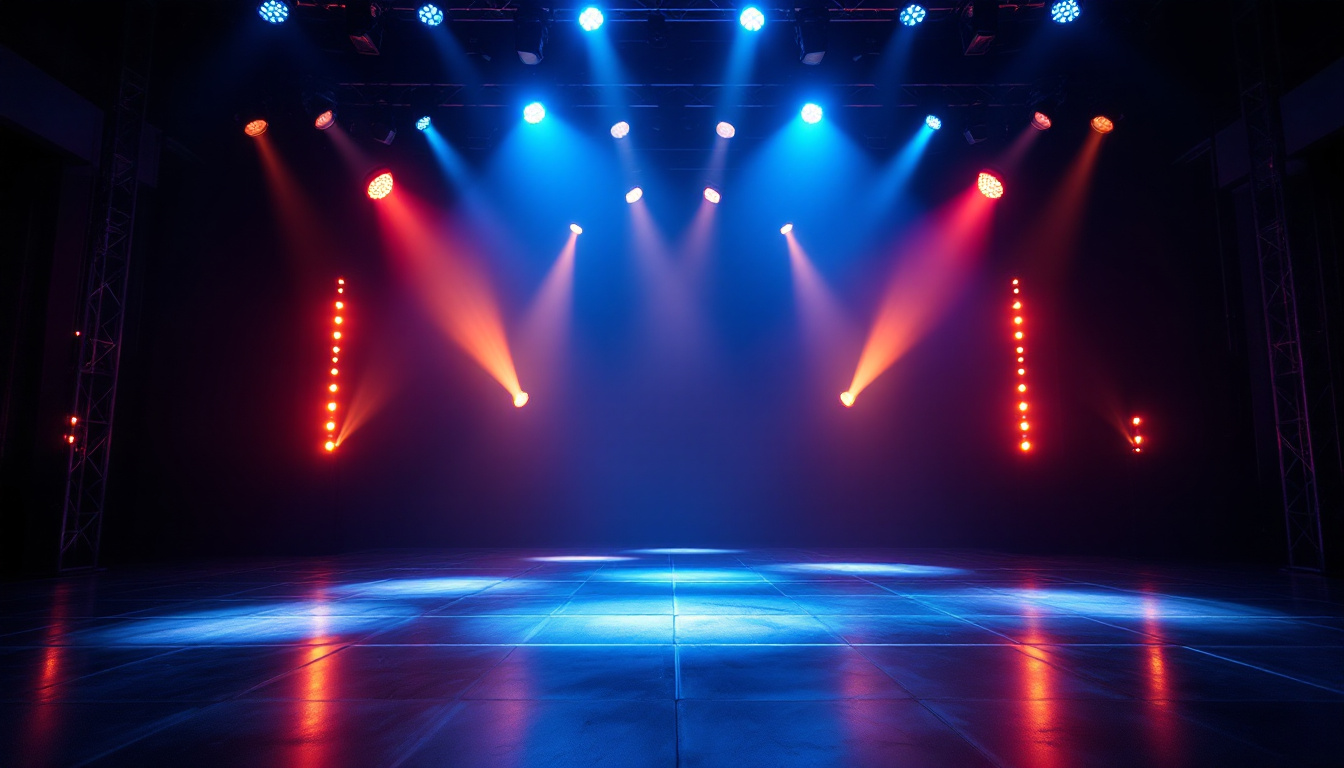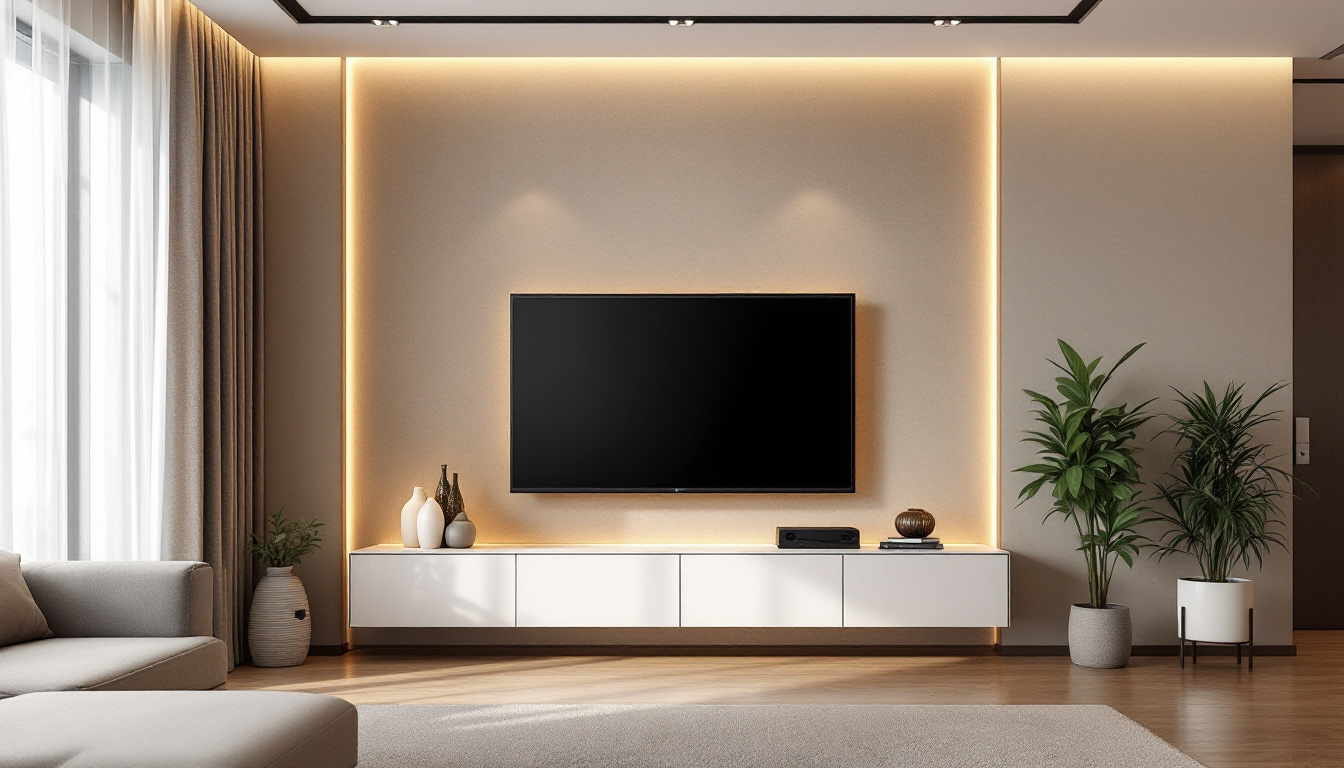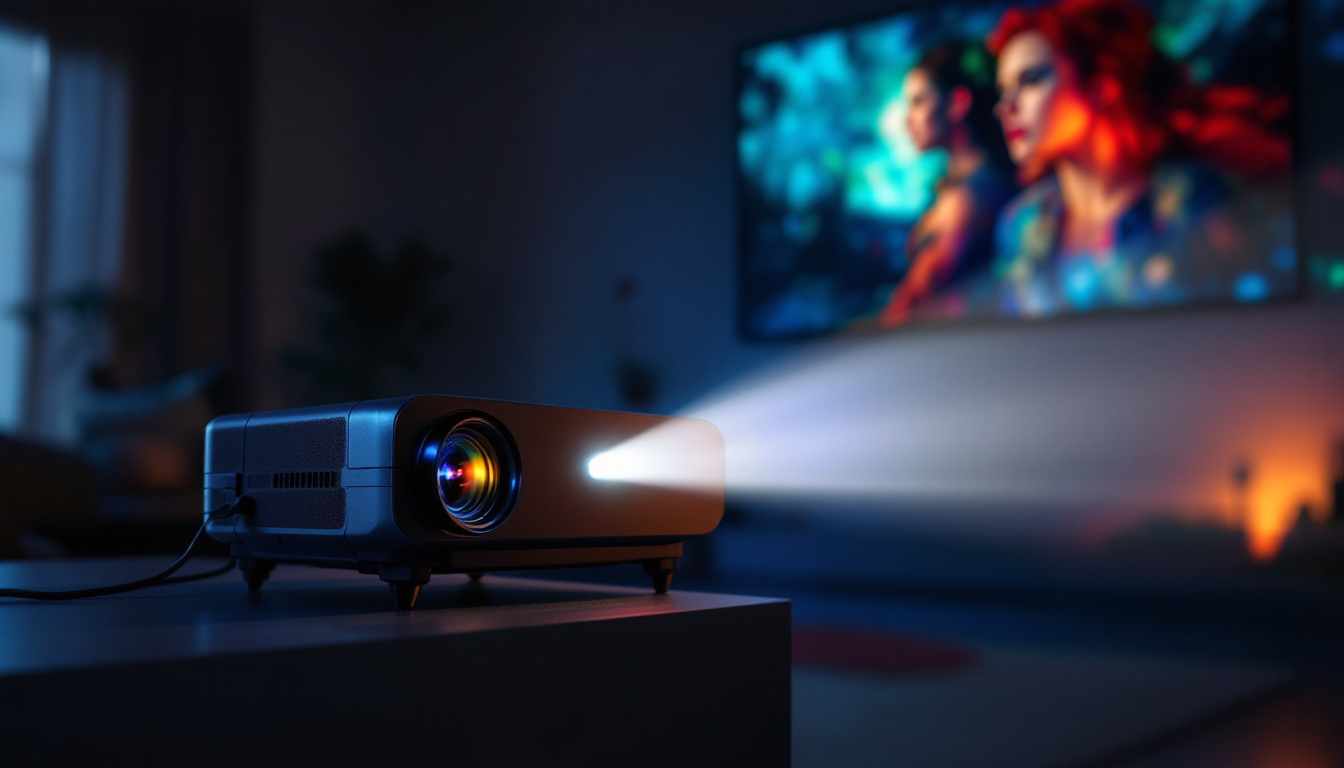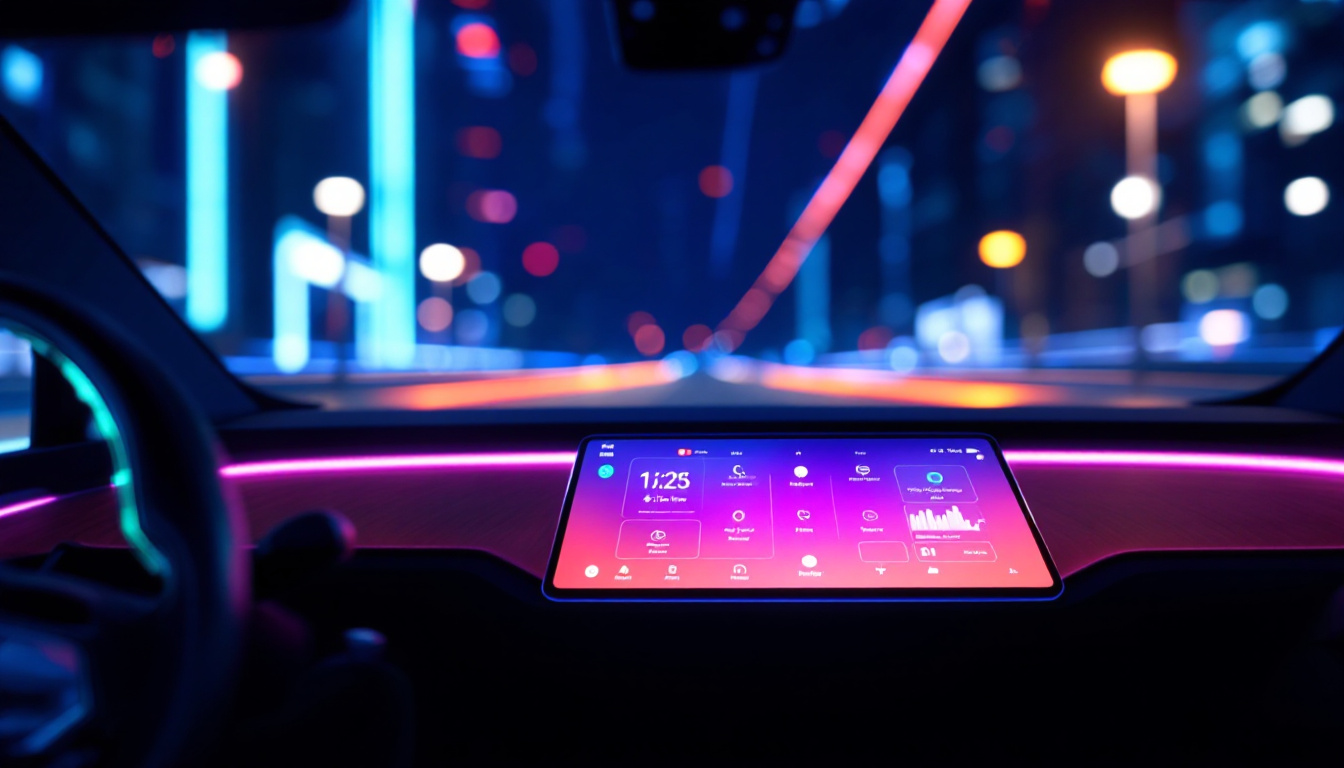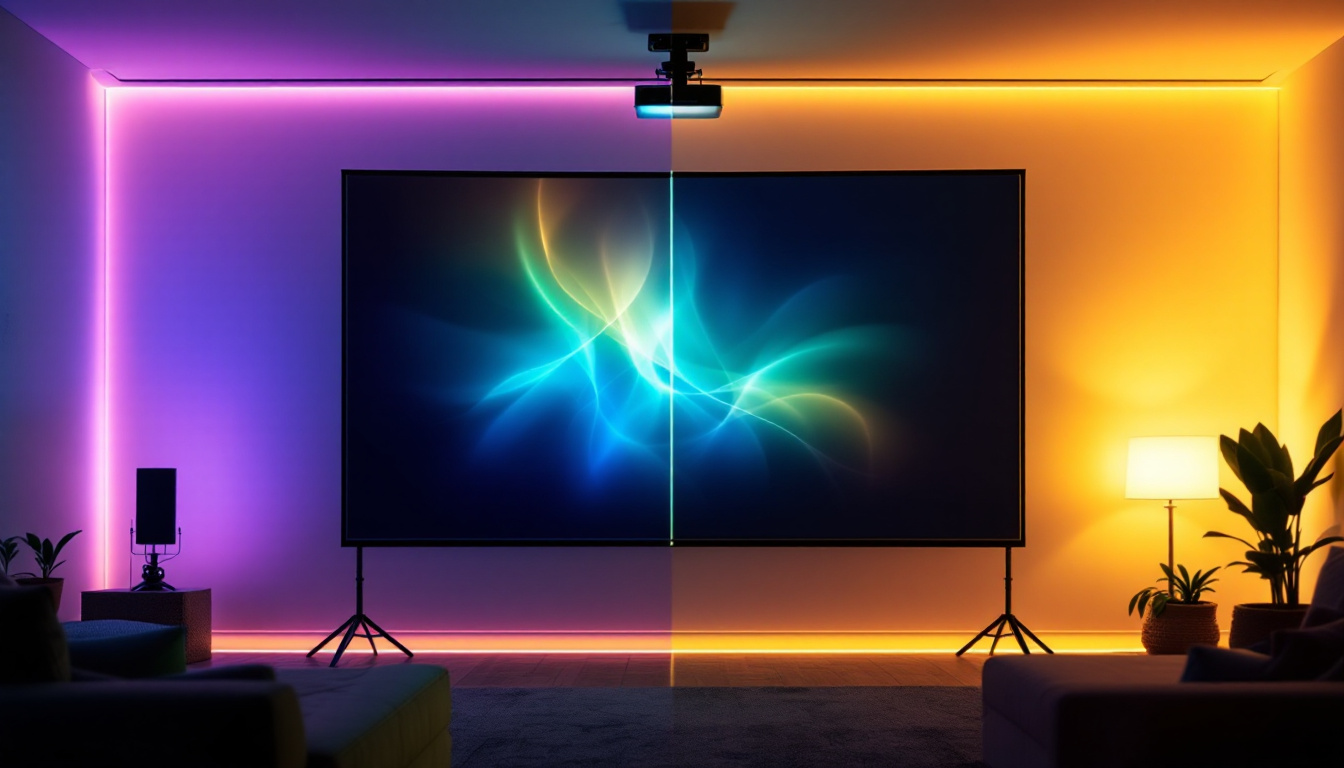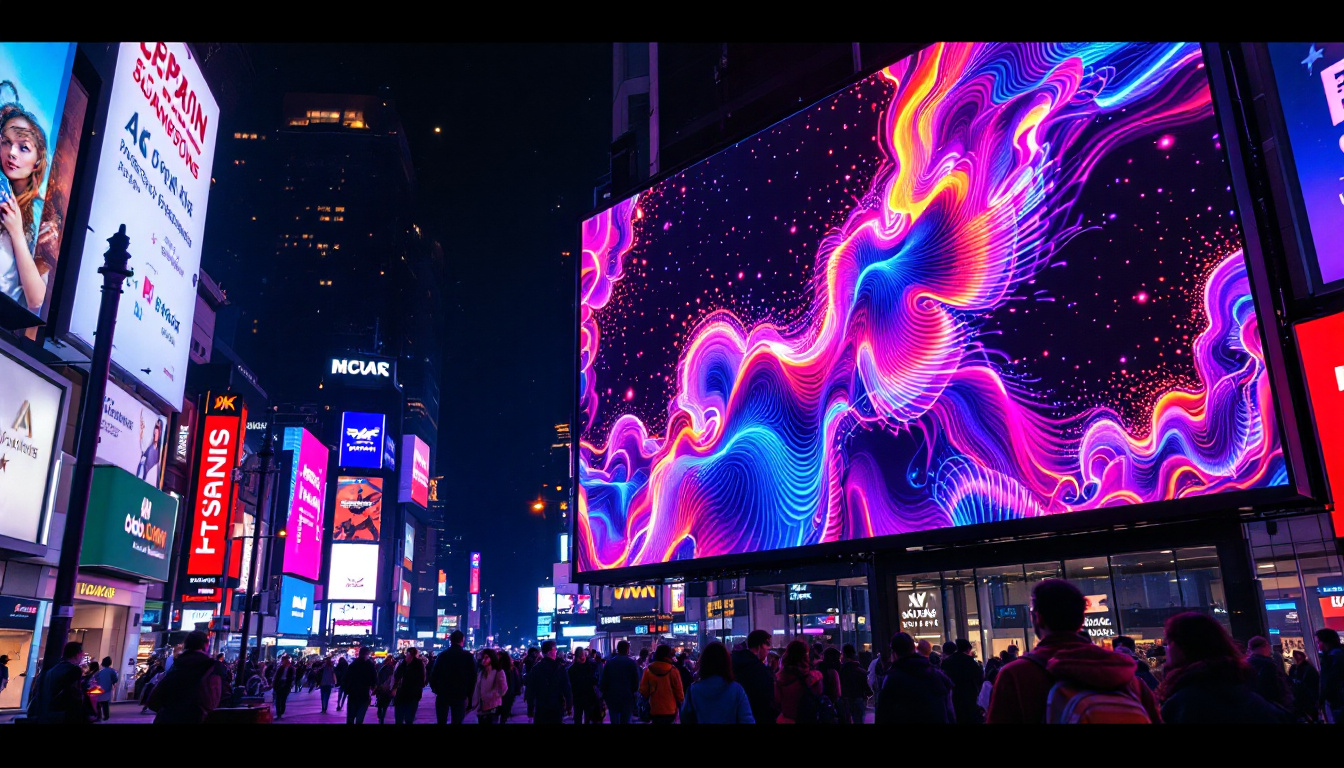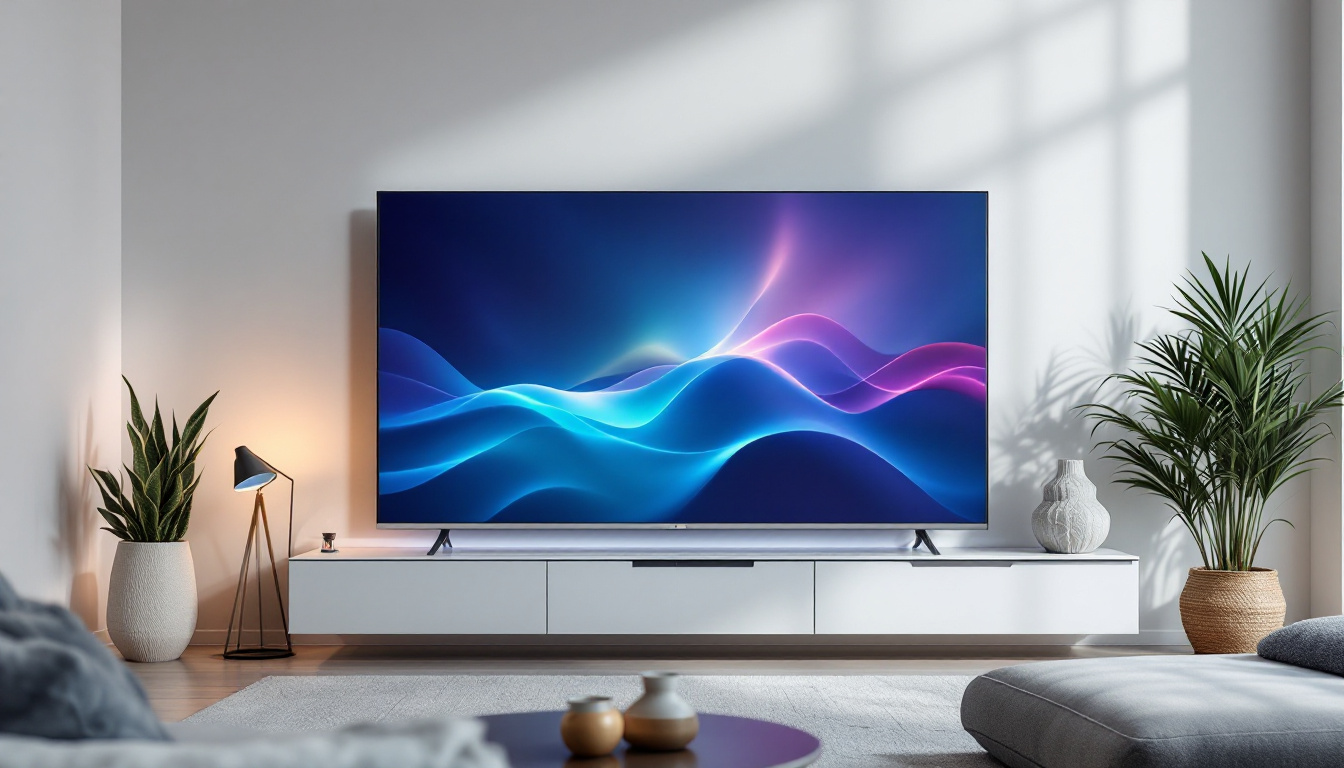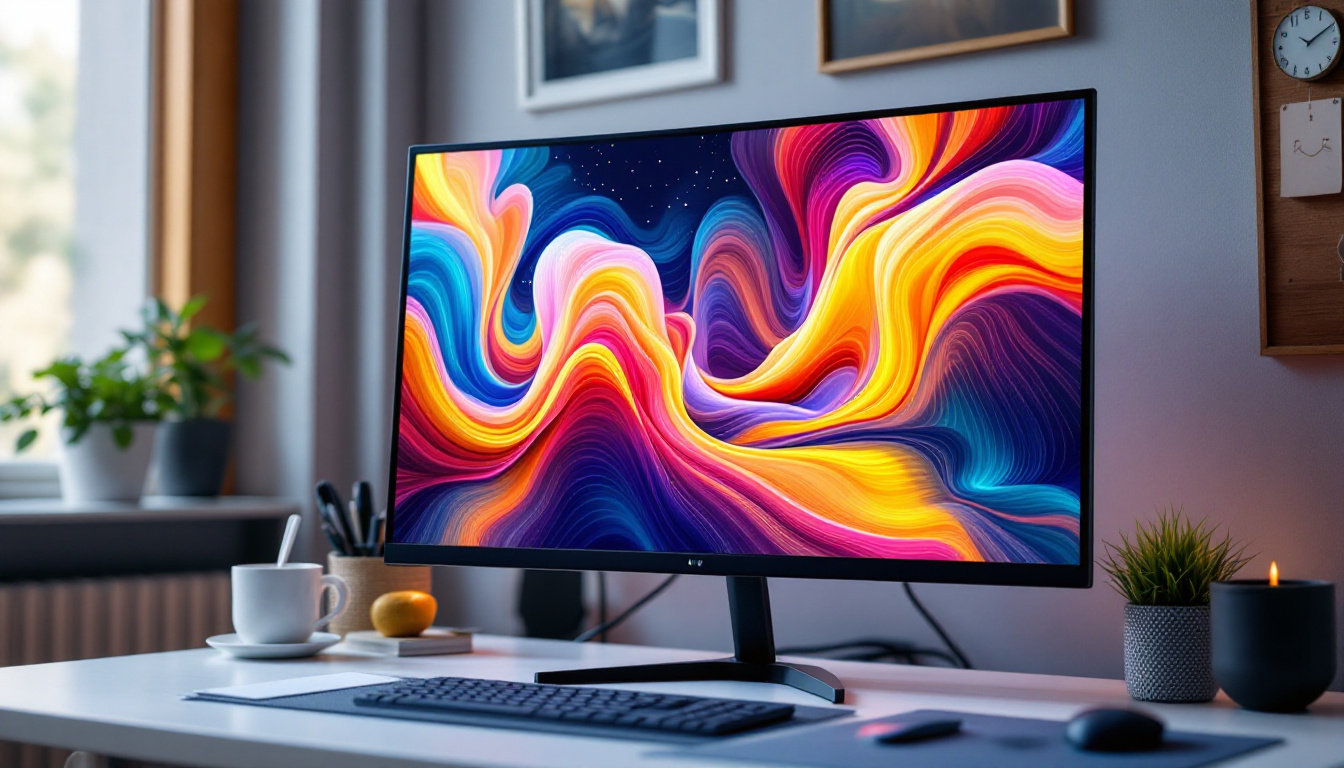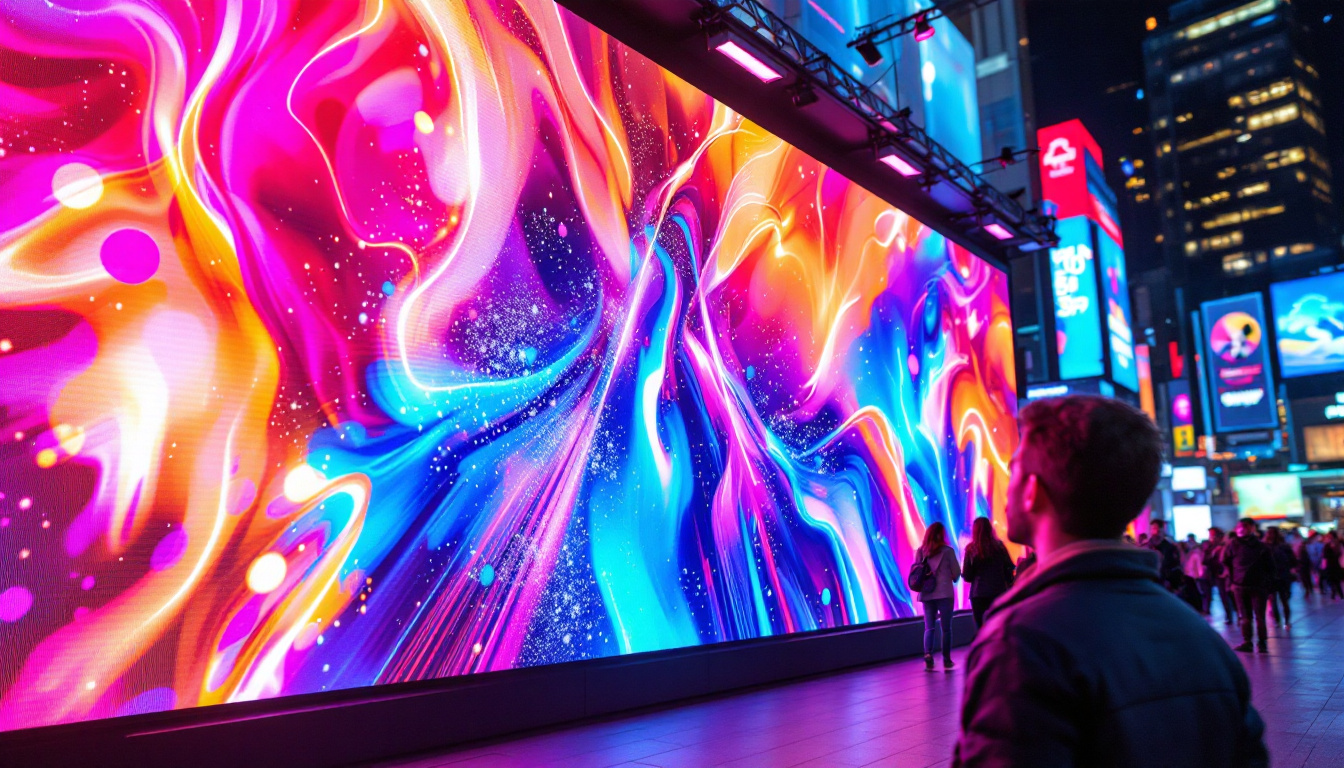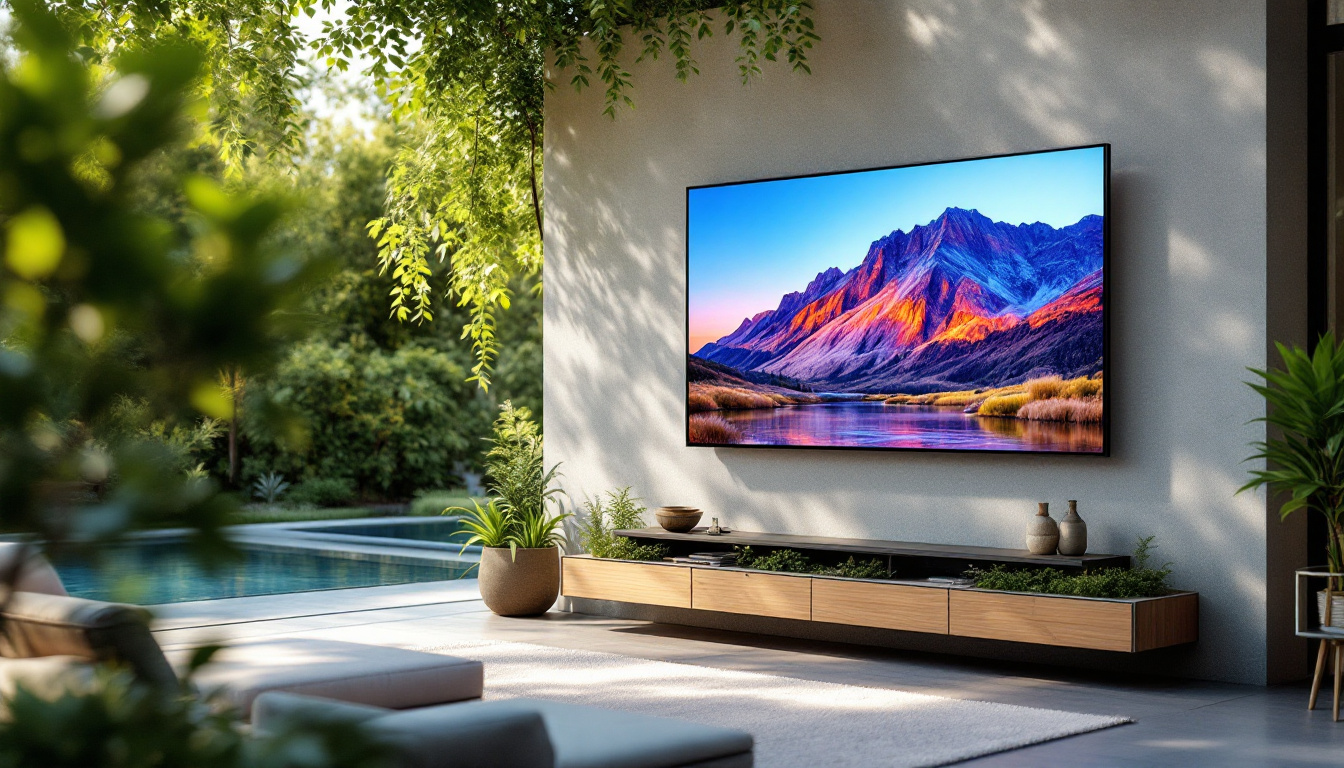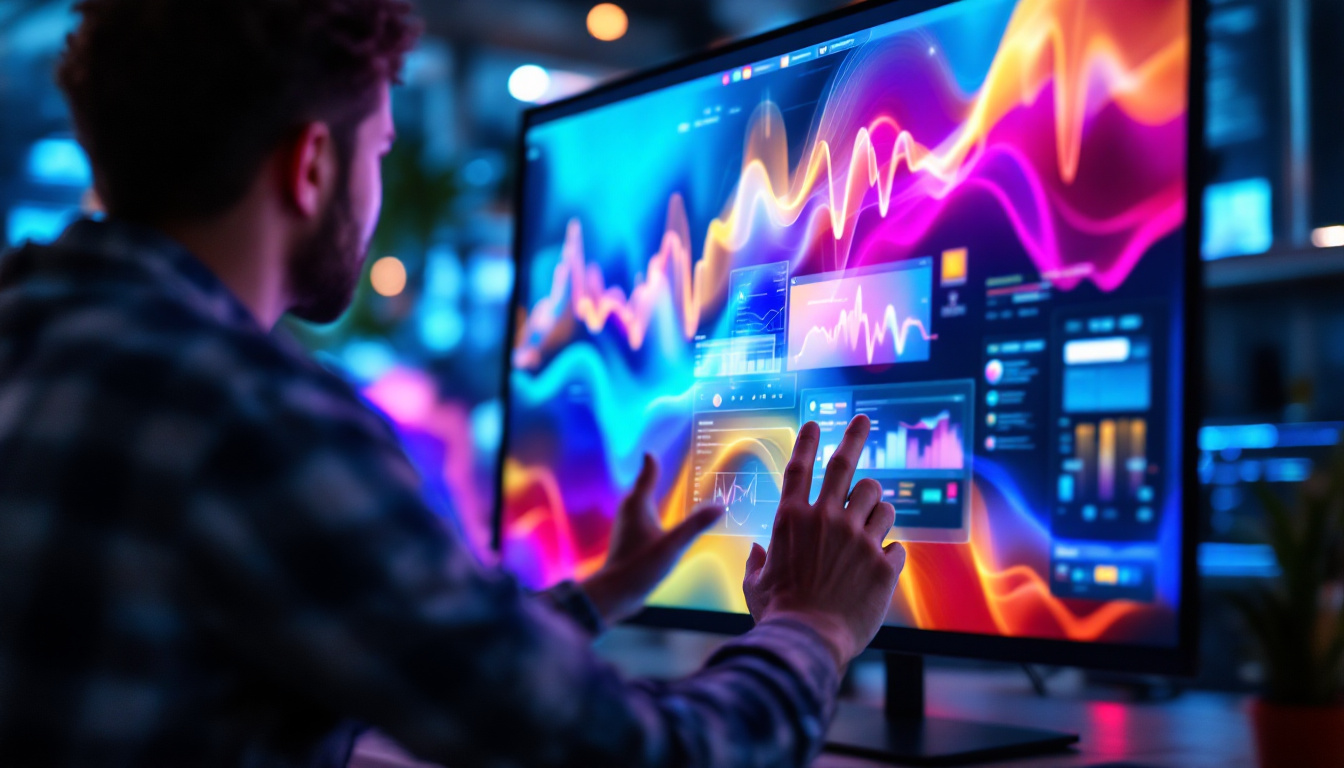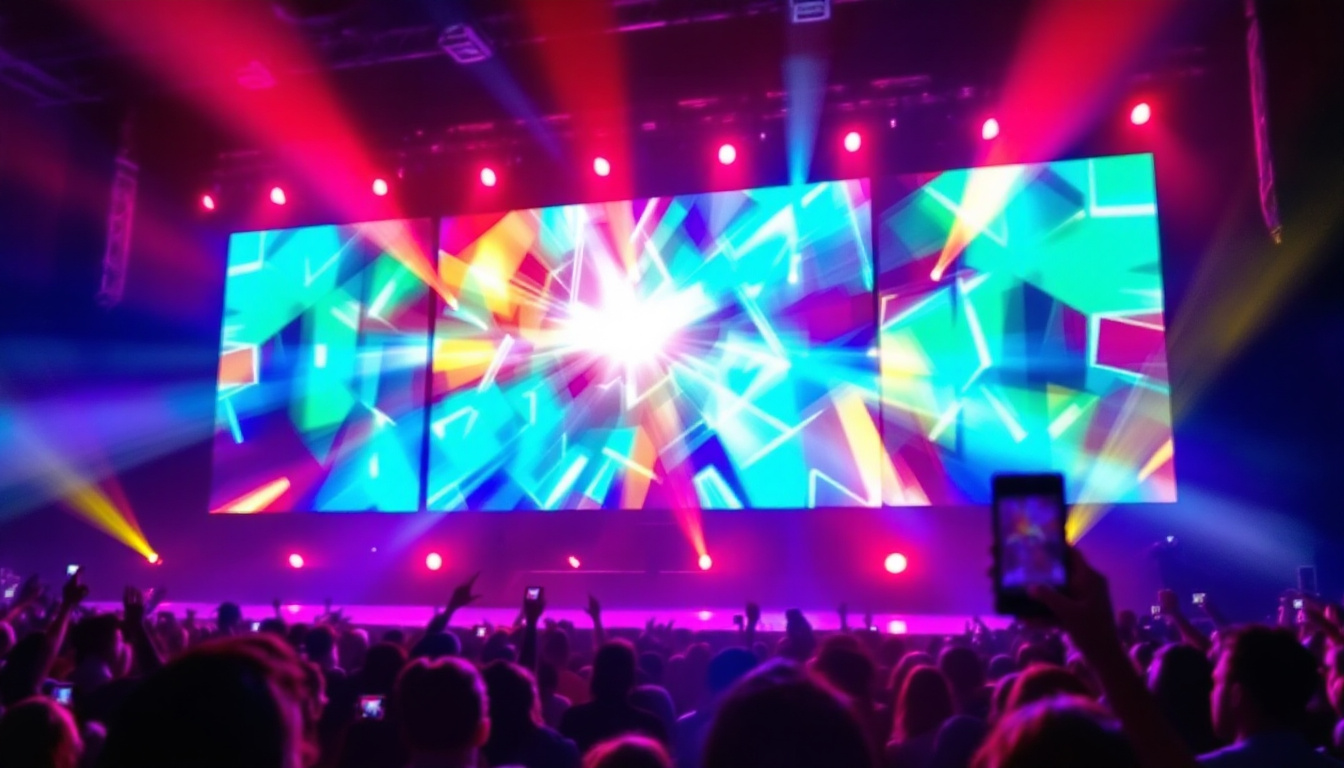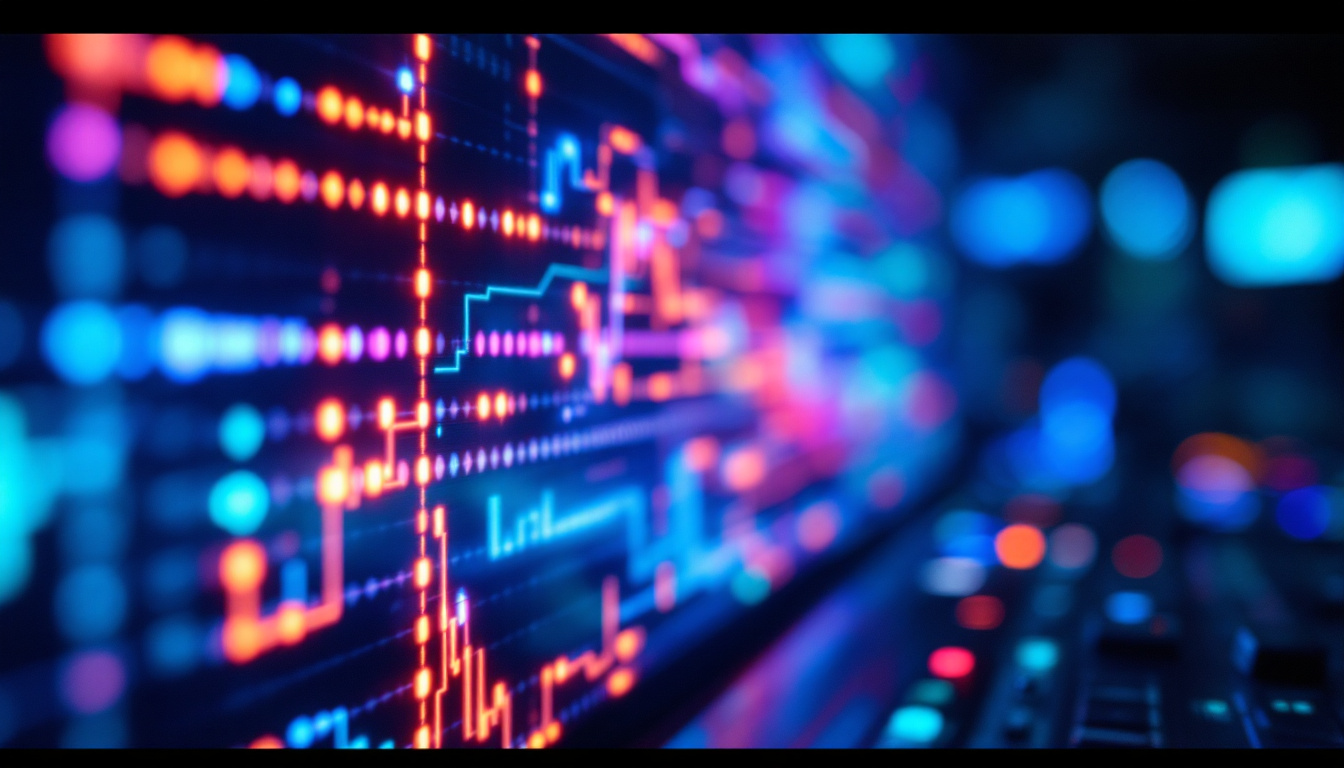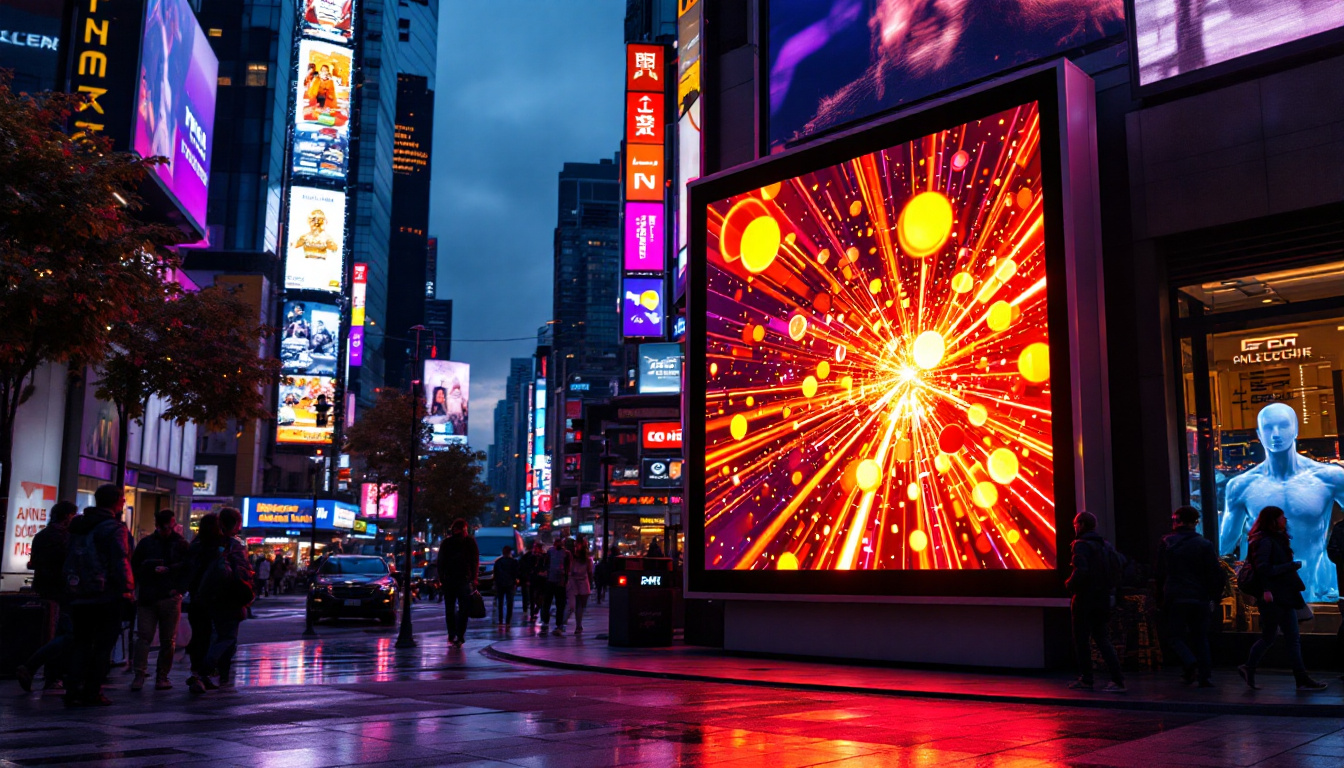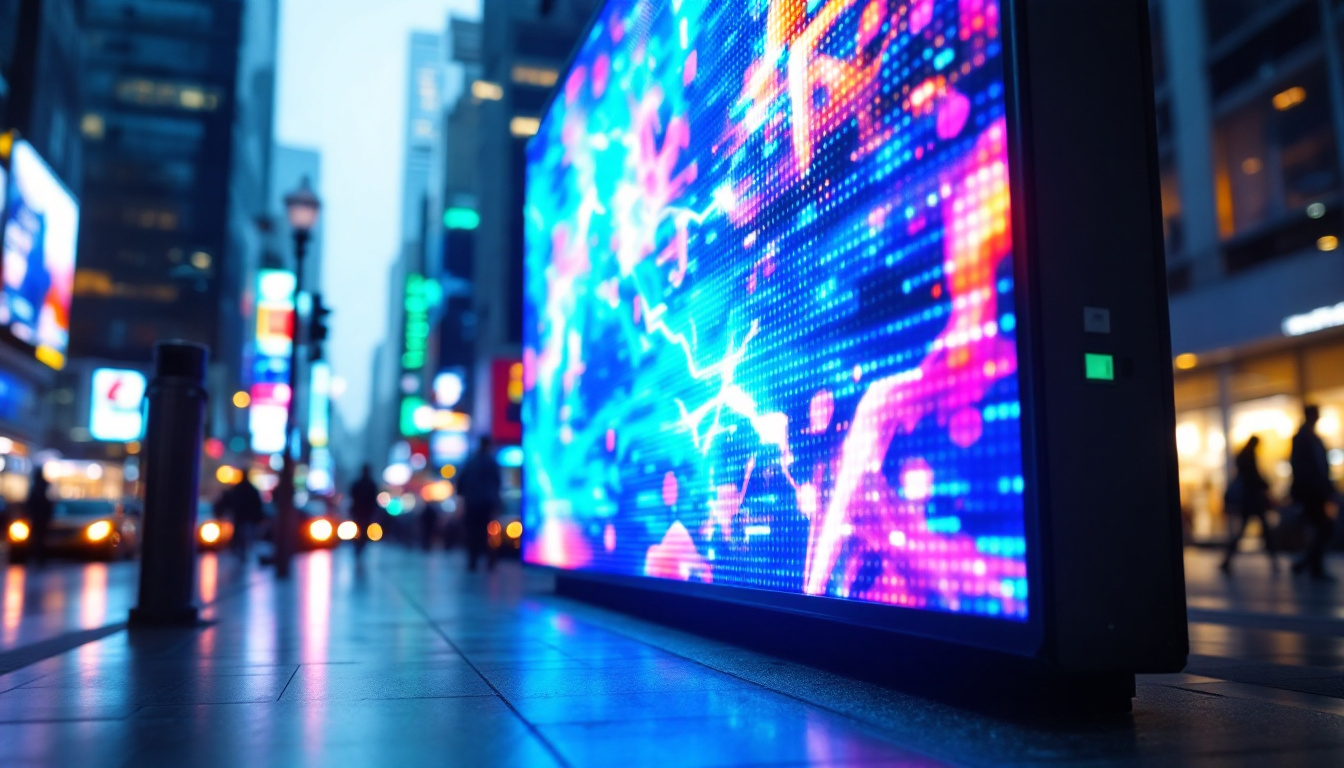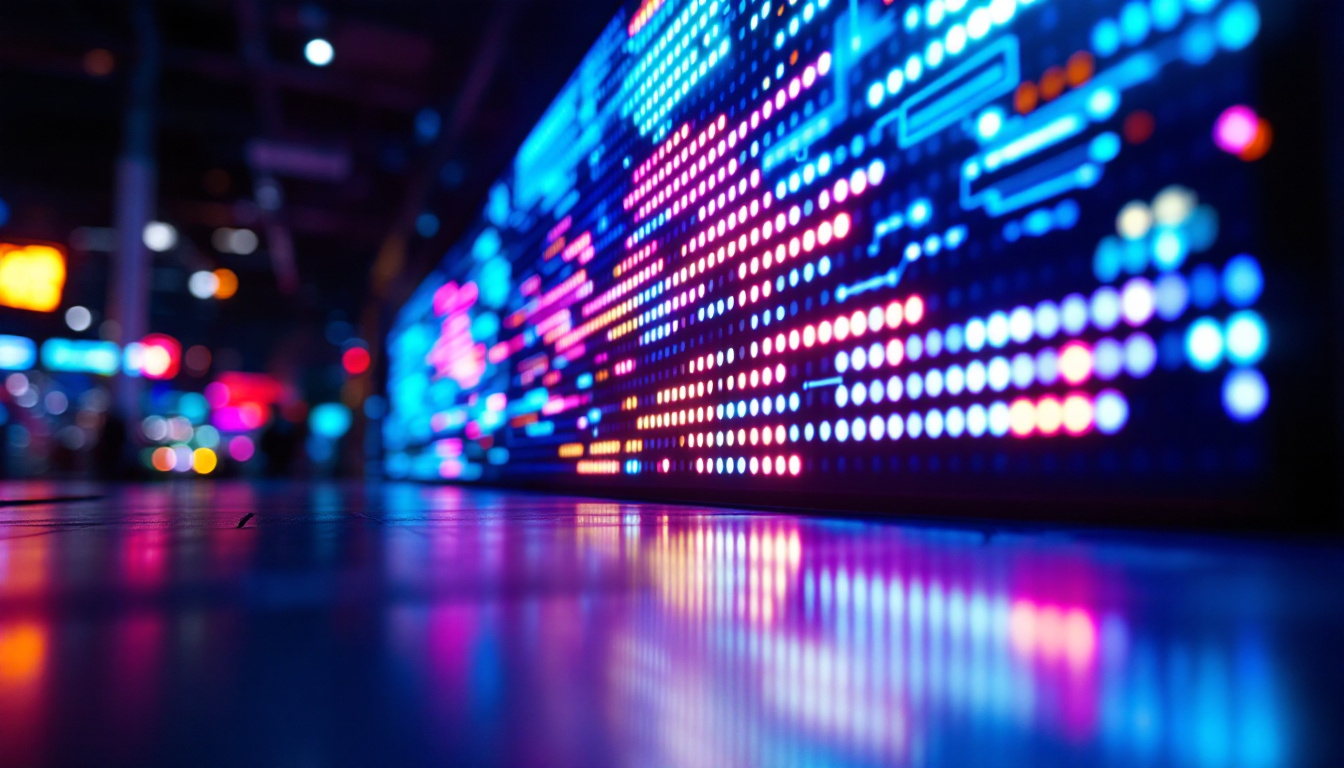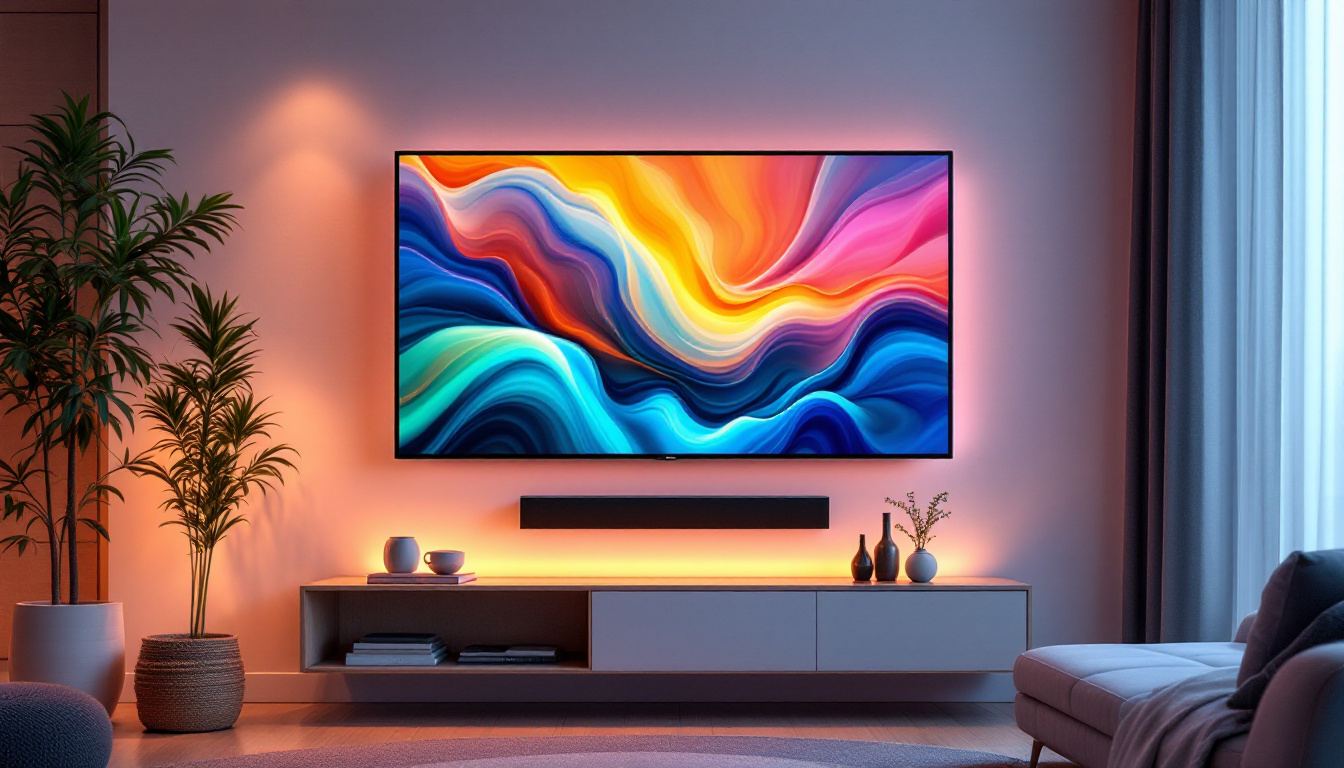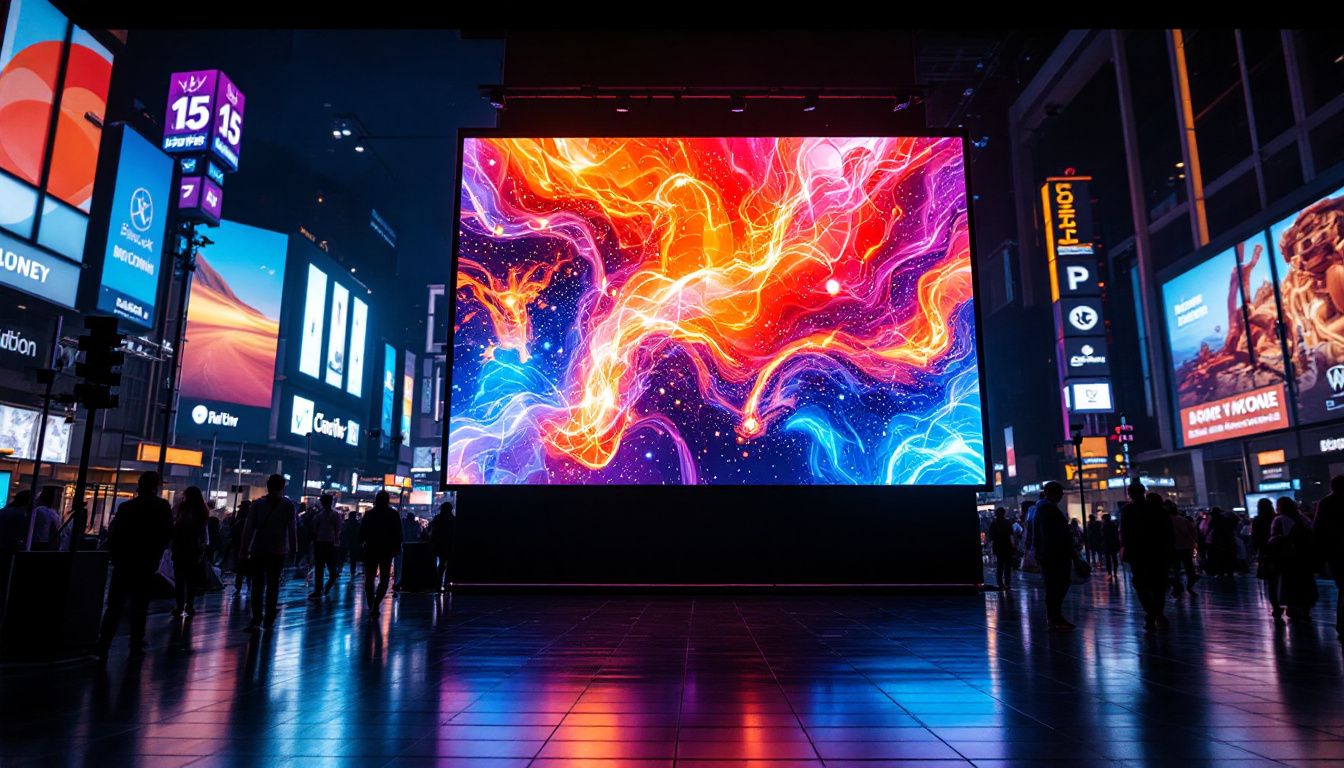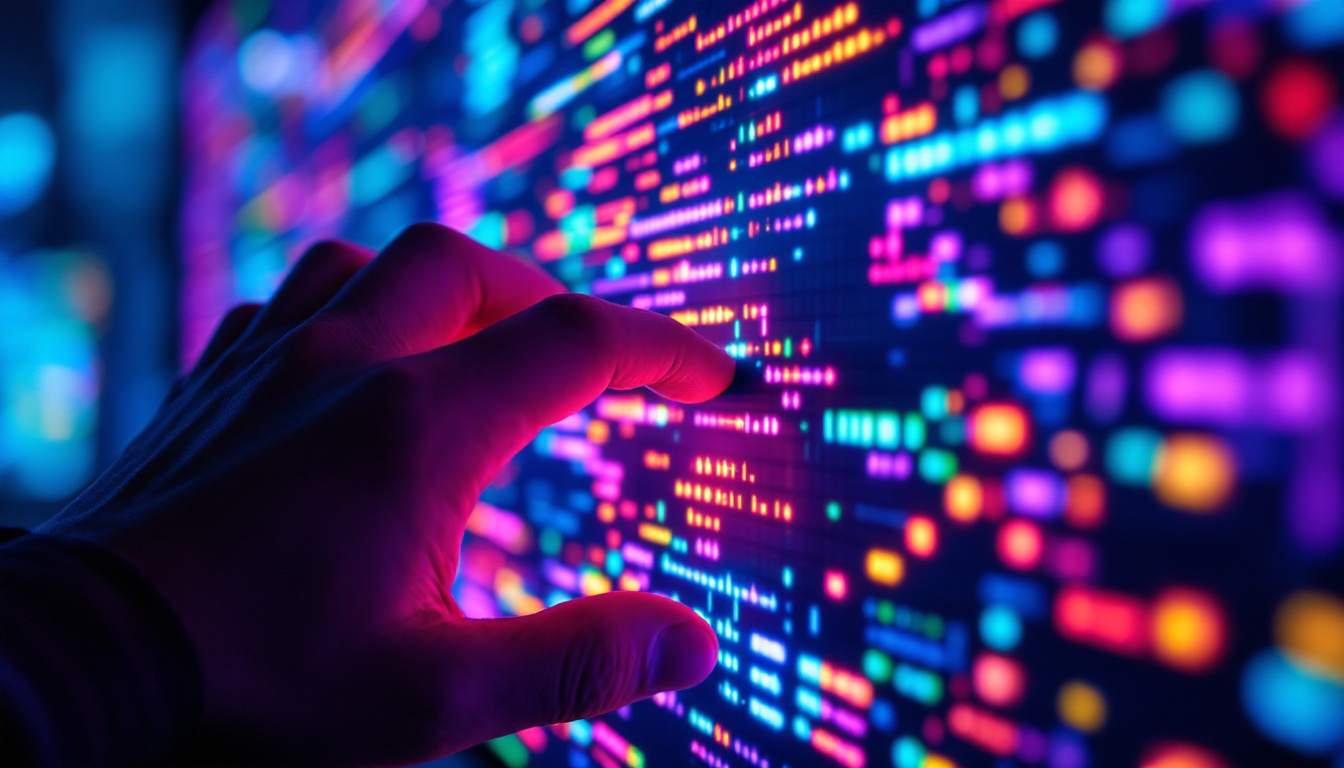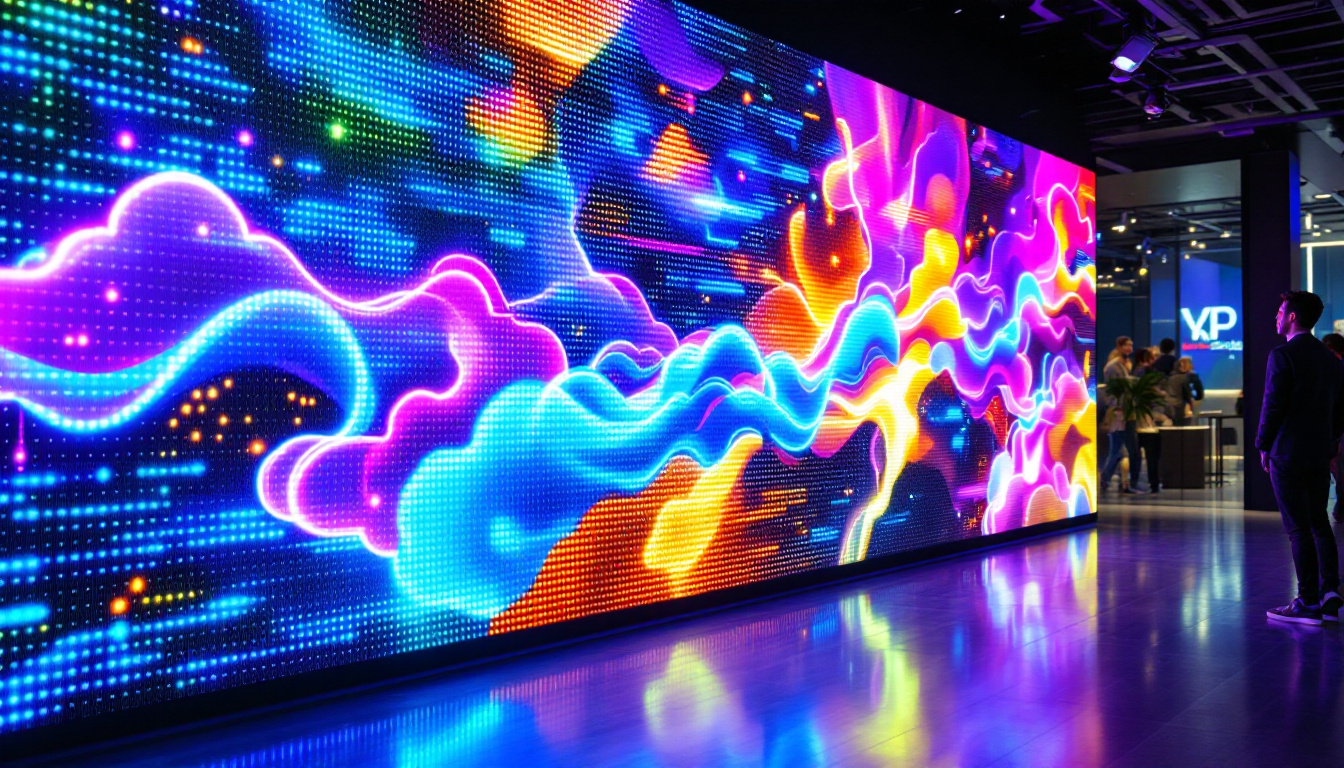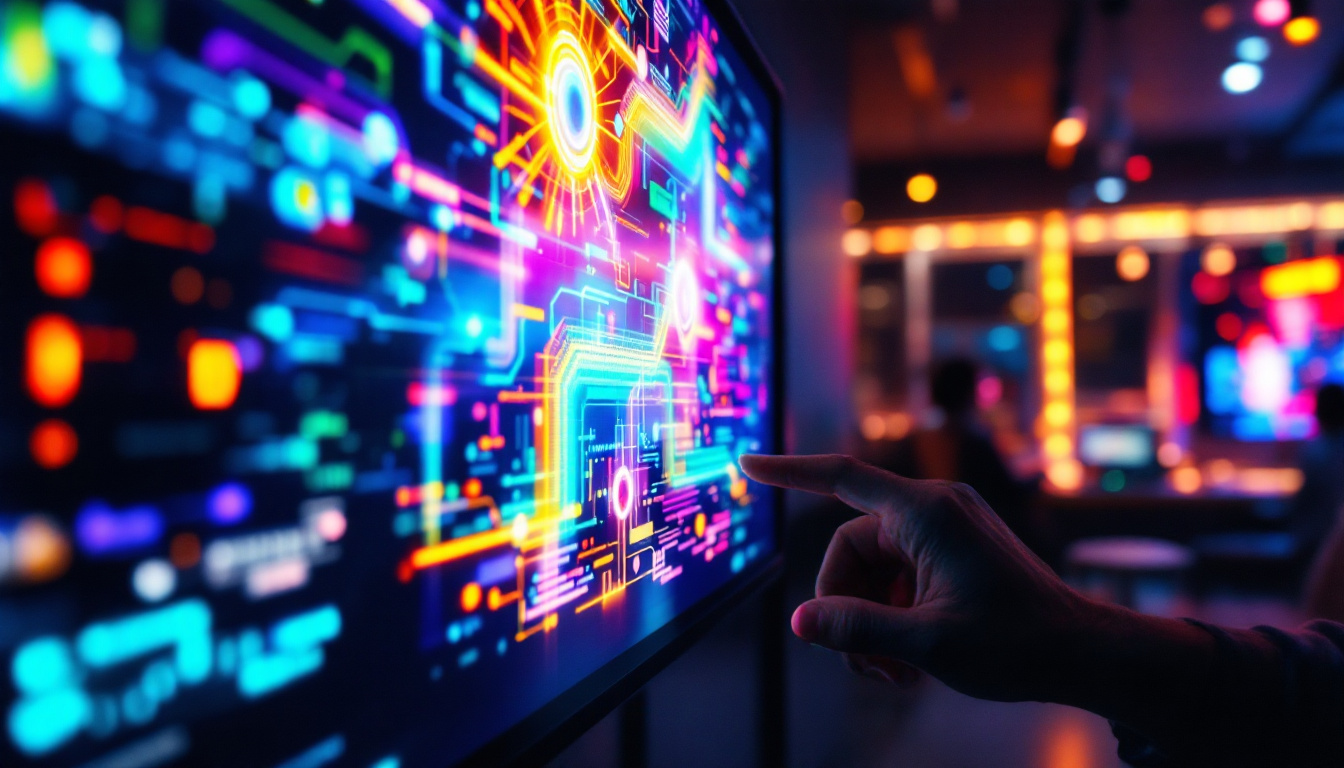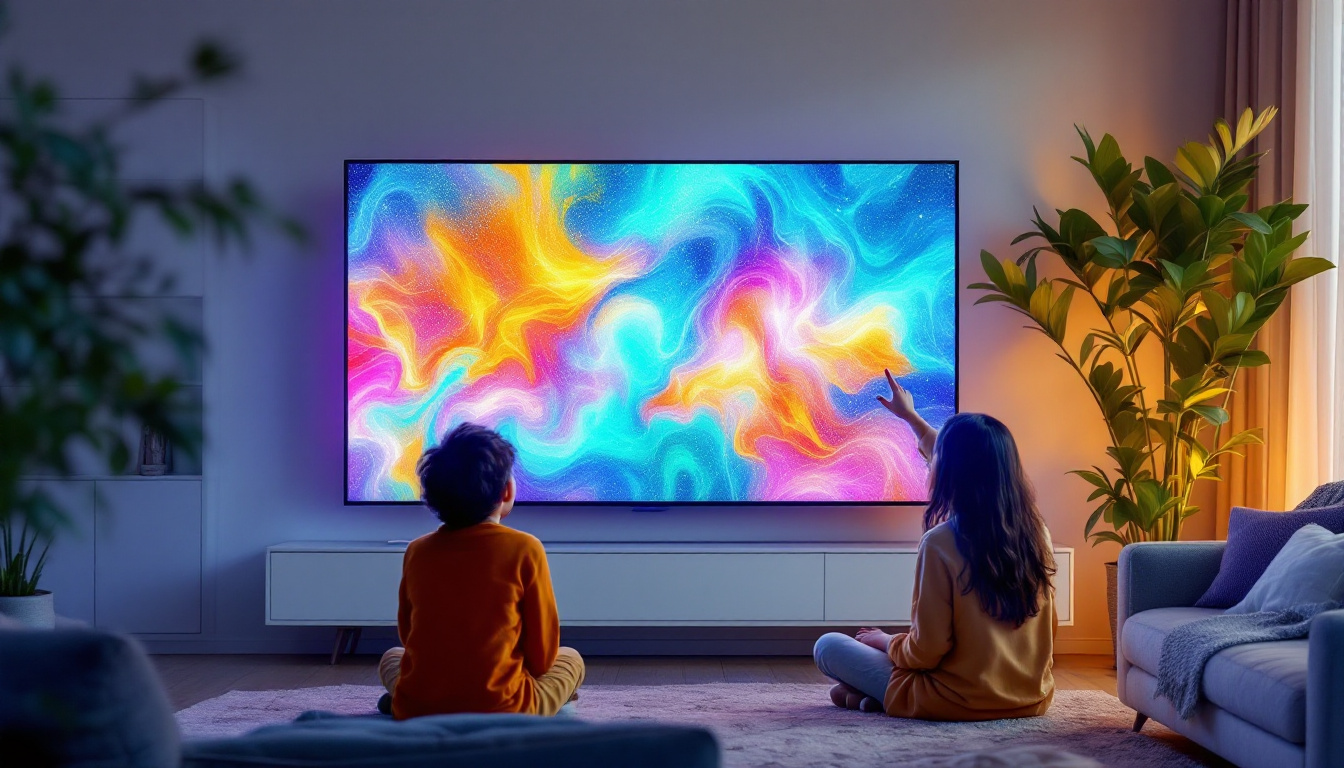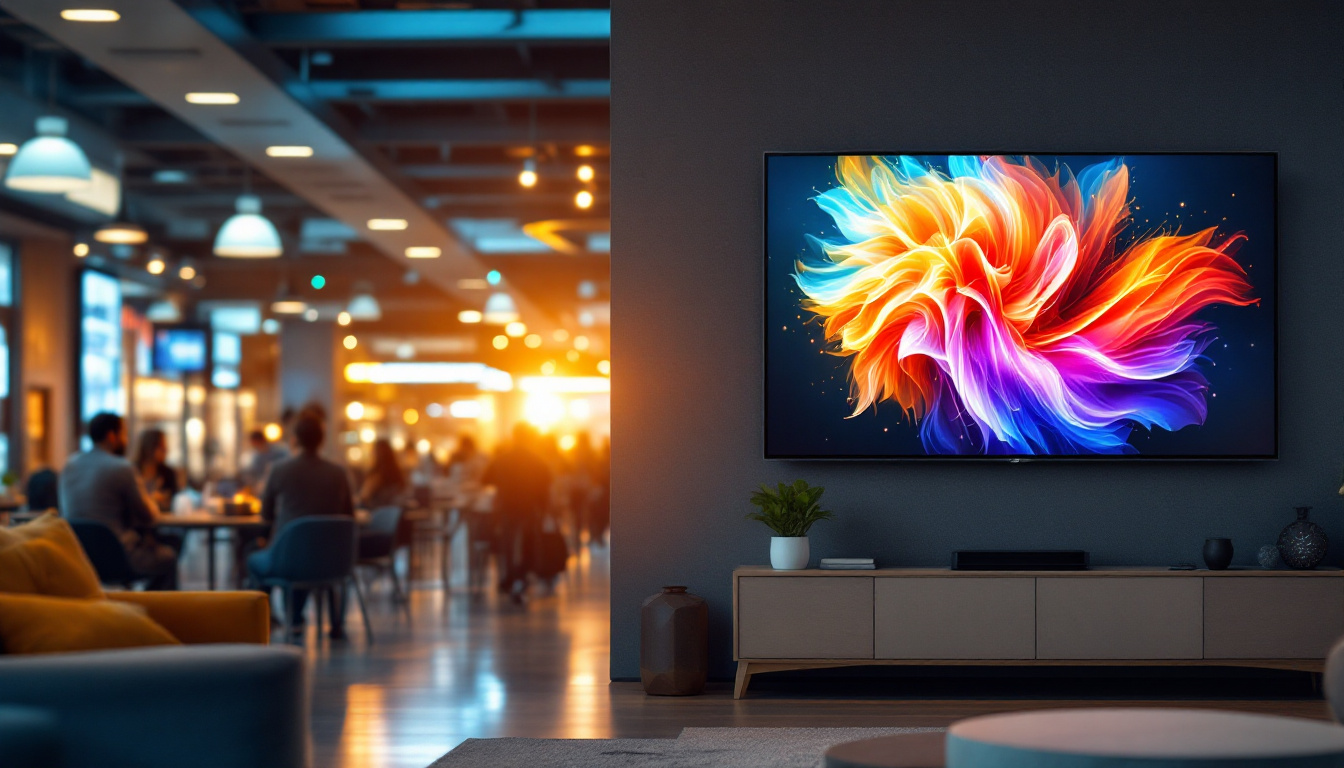In the world of modern technology, LED displays have become ubiquitous, transforming the way we consume visual content. From televisions to smartphones, the vibrant colors and sharp images produced by LED technology have captivated audiences globally. This article delves into the intricacies of LED displays, focusing on their diagonal picture presentation, and explores the technology behind them, their applications, and the future of display technology.
Understanding LED Technology
LED, or Light Emitting Diode, is a semiconductor device that emits light when an electric current passes through it. This technology has revolutionized the display industry, offering numerous advantages over traditional display technologies such as LCD and CRT. The core principle of LED technology lies in its ability to produce light efficiently and in various colors. With the growing demand for energy-efficient lighting solutions and high-quality visual displays, LED technology has become a cornerstone in both consumer electronics and commercial applications.
The Basics of LED Displays
LED displays consist of an array of tiny light-emitting diodes that work together to create images. Each pixel on an LED screen is made up of red, green, and blue diodes, which can be combined in different intensities to produce a wide spectrum of colors. This RGB (Red, Green, Blue) configuration allows for high-quality images with excellent brightness and contrast. Furthermore, the compact size of LEDs enables manufacturers to create thinner and lighter screens, making them ideal for a variety of devices, from smartphones to large-scale video walls.
One of the key advantages of LED displays is their ability to produce deeper blacks and brighter whites compared to traditional displays. This is primarily due to the fact that LEDs can turn off completely to produce true black, while LCDs often struggle with backlight bleed. The result is a more dynamic range of colors and a more immersive viewing experience. Additionally, LED technology is known for its longevity; many LED displays can last up to 50,000 hours or more, significantly reducing the need for frequent replacements and contributing to lower overall maintenance costs.
Types of LED Displays
There are several types of LED displays, each designed for specific applications. The most common types include:
- Direct View LED: These displays use individual LEDs to create images directly. They are often used in large outdoor screens and billboards, providing vibrant visuals even in bright sunlight.
- LED Backlit LCD: These displays use LEDs to illuminate an LCD panel. They are prevalent in televisions and computer monitors, offering improved energy efficiency and better color reproduction compared to traditional CCFL backlighting.
- Organic LED (OLED): A more advanced technology where organic compounds emit light. OLED displays are known for their exceptional color accuracy and flexibility, allowing for curved and even foldable screens that can enhance user experience.
Each type of LED display has its unique characteristics, making them suitable for different environments and use cases. For instance, Direct View LED displays are often utilized in sports arenas and concert venues due to their high brightness and visibility from long distances. In contrast, OLED technology is increasingly being adopted in high-end televisions and smartphones, where the need for superior image quality and design aesthetics is paramount. As the technology continues to evolve, we can expect to see even more innovative applications and improvements in LED display performance.
The Importance of Diagonal Picture in LED Displays
The term “diagonal picture” refers to the way images are perceived on screens, particularly in relation to the screen’s diagonal measurement. This aspect is critical for understanding how viewers engage with visual content and how display technology is designed.
Aspect Ratio and Viewing Experience
The aspect ratio of a display, which is the ratio of its width to its height, plays a significant role in how images are presented. Common aspect ratios include 16:9 for widescreen displays and 4:3 for traditional television screens. The diagonal measurement of a screen is often used to describe its size, which affects the overall viewing experience.
For instance, a 55-inch TV with a 16:9 aspect ratio offers a different viewing experience than a 55-inch TV with a 4:3 aspect ratio. The wider aspect ratio allows for a more cinematic experience, making it ideal for watching movies and playing video games. Understanding these nuances helps consumers make informed decisions when purchasing LED displays.
Pixel Density and Resolution
Another crucial factor in the diagonal picture quality of LED displays is pixel density, which refers to the number of pixels per inch (PPI) on the screen. Higher pixel density results in sharper images and finer details, enhancing the overall viewing experience. For example, a 4K resolution display has a significantly higher pixel density than a 1080p display, making it ideal for large screens viewed from close distances.
When considering the diagonal picture, it’s essential to balance screen size and resolution. A larger screen with lower resolution may result in pixelation, while a smaller screen with higher resolution can provide a crisper image. This balance is vital for achieving the best visual experience, especially in professional settings such as graphic design and video editing.
Applications of LED Displays
The versatility of LED displays has led to their widespread adoption across various industries. From entertainment to advertising, the applications are vast and varied.
Entertainment and Media
In the entertainment industry, LED displays are used in everything from movie theaters to concert venues. Large-scale LED screens are often employed at music festivals and sporting events to provide audiences with a clear view of performances and highlights. The bright colors and high contrast of LED technology enhance the overall experience, making events more engaging.
Television manufacturers have also embraced LED technology, producing a range of models that cater to different consumer needs. Smart TVs equipped with LED displays offer streaming capabilities, interactive features, and high-definition content, making them a staple in modern households.
Advertising and Marketing
LED displays have transformed the advertising landscape, providing businesses with dynamic and eye-catching ways to promote their products and services. Digital billboards, which utilize LED technology, can display vibrant advertisements that capture the attention of passersby. These displays can be updated in real-time, allowing for targeted marketing campaigns and promotions.
Retail environments also benefit from LED displays, with many stores using them to showcase products, promotions, and brand messages. The ability to change content quickly and easily makes LED displays an invaluable tool for marketers looking to engage customers effectively.
Corporate and Educational Use
In corporate settings, LED displays are often used for presentations, video conferencing, and information sharing. Their clarity and brightness make them suitable for large conference rooms and auditoriums, ensuring that all attendees can see the content being presented.
educational institutions have also adopted LED displays for classrooms and lecture halls. Interactive LED screens can facilitate collaborative learning and enhance the educational experience by providing visual aids that support various teaching methods.
Future Trends in LED Display Technology
The field of LED display technology is constantly evolving, with new advancements and trends emerging regularly. As consumer demands and technological capabilities grow, several key trends are shaping the future of LED displays.
MicroLED Technology
MicroLED is an emerging display technology that promises to deliver even better performance than current LED displays. MicroLEDs are tiny, self-emissive pixels that can produce their light, resulting in superior brightness, contrast, and energy efficiency. This technology allows for thinner, lighter displays with improved color accuracy, making it an exciting development for future applications.
As MicroLED technology matures, it is expected to find its way into various consumer products, including televisions, smartphones, and wearable devices. The potential for flexible and transparent displays is also on the horizon, opening up new possibilities for design and functionality.
Increased Focus on Sustainability
As environmental concerns continue to rise, the display industry is placing a greater emphasis on sustainability. LED displays are already more energy-efficient than traditional technologies, but manufacturers are exploring ways to reduce their environmental impact further. This includes using recyclable materials, reducing waste during production, and improving energy efficiency even more.
Consumers are becoming increasingly conscious of their purchasing decisions, and companies that prioritize sustainability in their products are likely to gain a competitive edge in the market.
Integration with Smart Technology
The integration of LED displays with smart technology is another trend that is set to shape the future of display technology. As the Internet of Things (IoT) continues to expand, LED displays will increasingly be used in smart homes, offices, and public spaces. This integration allows for seamless connectivity and interaction, enhancing the user experience.
Smart LED displays can be controlled remotely, display real-time information, and even adapt to their environment. This level of interactivity opens up new possibilities for applications in advertising, education, and entertainment.
Conclusion
LED displays have undoubtedly transformed the way we interact with visual content, providing vibrant colors, sharp images, and innovative applications across various industries. Understanding the technology behind LED displays, including the significance of diagonal picture quality, is essential for consumers and professionals alike.
As advancements in LED technology continue to emerge, the future looks promising. From MicroLED innovations to sustainable practices and smart technology integration, the evolution of LED displays will undoubtedly shape the way we experience visual media for years to come. Embracing these changes will not only enhance our viewing experiences but also pave the way for exciting new applications that we have yet to imagine.
Explore the Future of Visual Experience with LumenMatrix
Ready to elevate your visual content to the next level? Discover LumenMatrix’s innovative LED display solutions, where cutting-edge technology meets creative design. Whether you’re looking to enhance your brand’s visibility with an Indoor LED Wall Display, captivate passersby with an Outdoor LED Wall Display, or create a dynamic environment with Custom LED Displays, LumenMatrix has the perfect solution for you. Embrace the future of visual communication and check out LumenMatrix LED Display Solutions today to see how we can help you share your message with impact and clarity.

